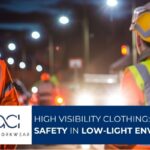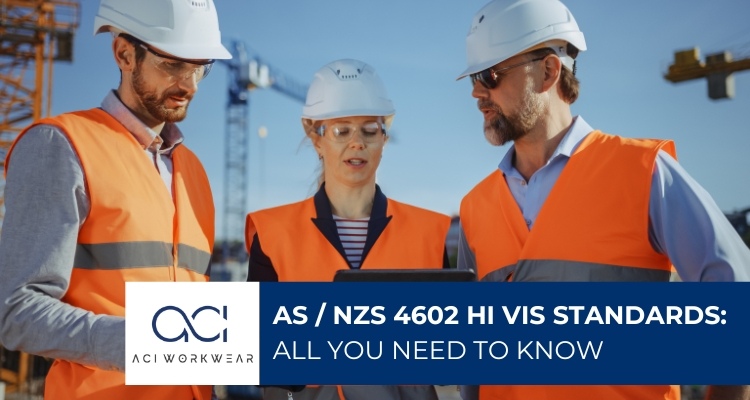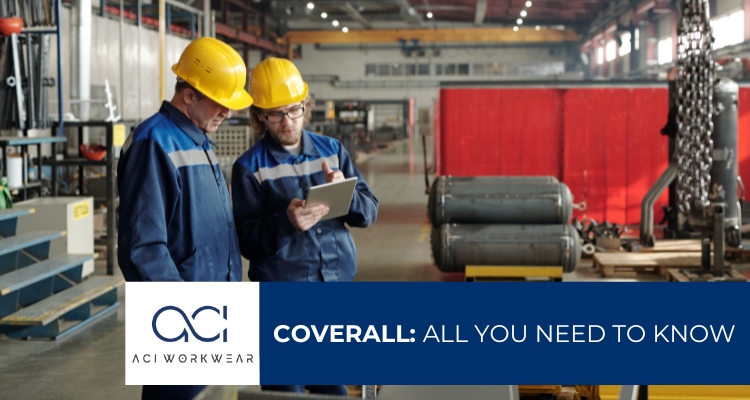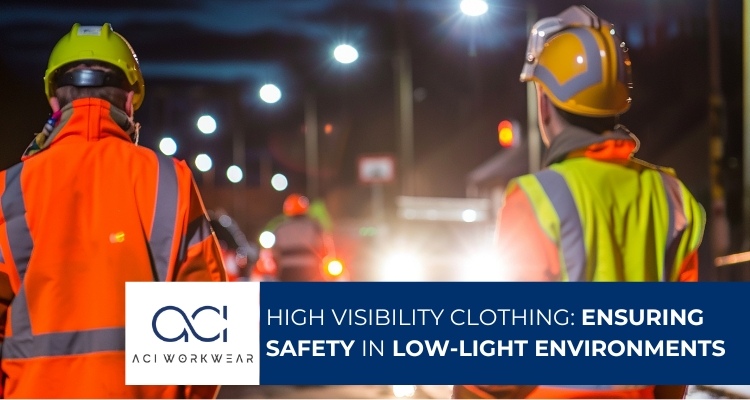
High Visibility Clothing: Ensuring Safety in Low-Light Environments
13/08/2024
Coverall: All You Need to Know
17/09/2024Introduction
When it comes to workplace safety, one of the most important pieces of equipment you can have is high-visibility (hi-vis) clothing.
Whether you're working on a construction site, directing traffic, or carrying out maintenance tasks, hi-vis gear helps ensure you're seen by those around you and reduces the risk of accidents and injuries.
But with so many different hi-vis standards and requirements out there, it can be tricky to know exactly what you need to be compliant.
That's where the AS/NZS 4602 standards come in.
These guidelines, developed in Australia and New Zealand, set out the specific performance and design requirements for hi-vis safety gear.
In this post, we're going to give you the complete lowdown on the AS/NZS 4602 hi-vis standards and how to ensure your workplace is fully compliant.
What are the AS/NZS 4602 Hi-Vis Standards?
The AS/NZS 4602 standards are the go-to guidelines for high-visibility safety clothing in Australia and New Zealand.
They're designed to ensure that hi-vis workwear meets certain minimum performance requirements so that workers are as visible and safe as possible.
There are two main parts to the AS/NZS 4602 standards:
- AS/NZS 4602.1:2011 : High visibility safety garments - Part 1: Garments for high-risk applications.
- AS/NZS 4602.2:2020 : High visibility safety garments - Part 2: Garments for occupational use.
The key difference between these two parts is the level of risk they're designed to address.
Part 1 covers hi-vis clothing for high-risk activities, while Part 2 focuses on more general occupational use.
Let's take a closer look at each part in more detail.
AS/NZS 4602.1:2011 (High-Risk Applications)
The first part of the AS/NZS 4602 standards, AS/NZS 4602.1:2011, is all about high-risk applications.
This means it covers hi-vis safety gear for workers who are exposed to particularly hazardous situations, where visibility is absolutely critical.
Some examples of the high-risk environments covered by Part 1 include:
- Road construction and maintenance
- Emergency services
- Railway operations
- Aviation ground support
- Mining and quarrying
AS/NZS 4602.1:2011 for Rail Industry in Australia
When it comes to the rail industry in Australia, safety is paramount. That's why the AS/NZS 4602.1:2011 standard plays a crucial role in ensuring the visibility and protection of rail workers.
This section of the standard is specifically tailored to address the unique challenges and risks faced by those working on or near railway tracks.
In the rail industry, workers are often exposed to high-risk environments with moving trains, heavy machinery, and varying light conditions. The AS/NZS 4602.1:2011 standard takes these factors into account, setting stringent requirements for hi-vis clothing worn by rail workers.
So, if you're involved in the rail industry, whether as an operator, contractor, or worker, make sure you're familiar with the specific requirements of AS/NZS 4602.1:2011.
It's not just about following rules - it's about ensuring everyone goes home safely at the end of each shift.
To ensure these workers are as visible as possible, AS/NZS 4602.1 sets out some stringent performance requirements for hi-vis clothing.
This includes:
- Minimum Levels of Retroreflection and Fluorescence Retroreflection and fluorescence are what give hi-vis gear its eye-catching glow, making the wearer stand out against their surroundings. Part 1 of the standard specifies minimum levels of both retroreflection and fluorescence that the garments must meet.
- Color Requirements The standard also outlines the specific colors that hi-vis clothing must be - typically a fluorescent yellow-green or orange-red shade. This helps ensure maximum visibility in different lighting conditions.
- Coverage Area High-risk workers need to be seen from all angles, so Part 1 mandates a minimum amount of hi-vis material that must be used to cover the body.
- Dimensional Stability and Workmanship Finally, the standard ensures that hi-vis clothing is well-made and durable, with requirements around things like dimensional stability, seam strength, and overall workmanship.
Based on these performance requirements, Part 1 of the AS/NZS 4602 standard categorizes hi-vis clothing into three different classes:
- Class N: For normal risk applications
- Class D/N: For day and night use
- Spinal cord injury garments: For workers at risk of spinal cord injuries
Each class has its own specific design and testing criteria, so you'll need to make sure the hi-vis workwear you choose matches the level of risk in your workplace.
AS/NZS 4602.1:2020 (Occupational Use)
While Part 1 of the AS/NZS 4602 standard deals with high-risk environments, Part 2 (AS/NZS 4602.2:2020) covers hi-vis clothing for more general occupational use.
This includes situations where the risk may be lower, but visibility is still an important safety consideration.
Think things like:
- Road maintenance
- Parking/traffic control
- General construction work
- Utilities/service work
The performance requirements in AS/NZS 4602.1:2020 are a little less stringent than AS/NZS 4602.1:2011, but they still ensure a high level of visibility and safety.
- Minimum Levels of Retroreflection and Fluorescence Like AS/NZS 4602.1:2011, AS/NZS 4602.1:2020 specifies minimum levels of retroreflection and fluorescence for the hi-vis material used. However, the requirements are slightly lower than for high-risk applications.
- Color Requirements The color requirements for occupational hi-vis clothing are the same as AS/NZS 4602.1:2011 - fluorescent yellow-green or orange-red shades.
- Coverage Area The coverage area mandated in AS/NZS 4602.1:2020 is also slightly less than for high-risk gear, but it still ensures good overall visibility.
- Dimensional Stability and Workmanship The standards for construction quality and durability are similar to AS/NZS 4602.1:2011, ensuring hi-vis workwear is fit for purpose.
Based on these performance criteria, the AS/NZS 4602.1:2020 standard categorizes hi-vis clothing into three classes:
- Class HR: For high-risk occupational use
- Class D: For day use only
- Class N: For night use only
Again, you'll need to make sure the hi-vis gear you choose matches the level of risk in your workplace.
Conclusion
When it comes to workplace safety, high-visibility (hi-vis) clothing is an essential piece of personal protective equipment (PPE).
The AS/NZS 4602 standards are the go-to guidelines for ensuring this hi-vis workwear meets the necessary performance requirements.
Finding the right high-visibility workwear that meets the AS/NZS 4602 standards can be a challenge.
That's where a trusted supplier like ACIGroup can help.
ACIGroup is a leading manufacturer and distributor of premium hi-vis clothing and other PPE solutions. With over 30 years of experience, they have an extensive range of AS/NZS 4602 compliant garments, from Class N to Class HR and everything in between.









